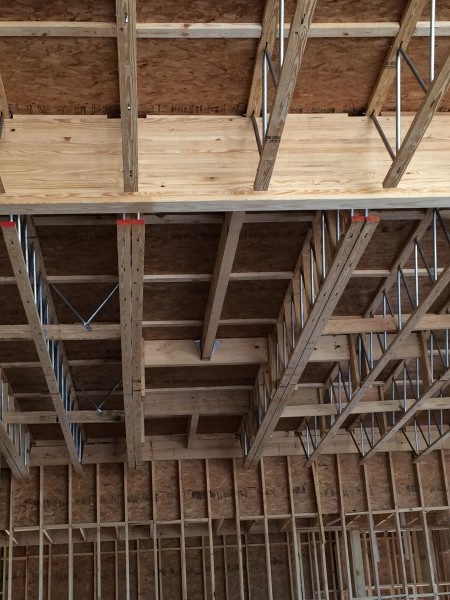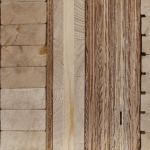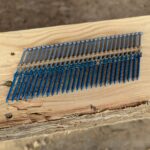Expert Tips
Does T&G Sheathing Constitute a Blocked Diaphragm or Shear Wall?
Requirements for blocking at panel edges in diaphragms and shear walls.

For most sheathing thicknesses and products, no; using tongue and groove sheathing does not replace the requirements of blocking at panel edges in diaphragms and shear walls. The American Wood Council’s Special Design Provisions for Wind and Seismic (SDPWS), sections 4.2.7.1.1 and 4.3.6.1, provide requirements for blocked diaphragms and shear walls (respectively). Tables 4.2A and 4.2B in the SDPWS provide capacities for blocked diaphragms while Table 4.2C provides unblocked diaphragm capacities. There is one exception: 1-1/8″ sheathing can be considered as blocked when adjoining panels are adequately fastened together because the T&G joint is 7/8″ long, which allows nailing and shear transfer across the joints. All other T&G joints are usually only 3/8″ long, which allows the transfer of gravity loads but not shear loads. APA Report 138 allows nailing at T&G joints to transfer shear across the joint in lieu of blocking on only 1-1/8″ panels because of the depth of the groove. Glued diaphragm testing and T&G joint discussions can be referenced in test 11 and on pages 25 and 37 of APA Report 138.
According to SDPWS section 4.2.7.1.1, in order to qualify as a blocked diaphragm, “all joints in sheathing shall occur over and be fastened to common framing members or common blocking.” This is true for all conditions except as noted above.
Further blocking requirements include that the nailed face of framing members and blocking at panel edges be 2″ nominal or greater unless close nail spacing’s or larger nails are used, in which case 3″ nominal framing member and blocking are required (SDPWS 4.2.7.1.1.3). Unblocked diaphragms are permitted but include a unique set of aspect ratios (SDPWS Table 4.2.4) and capacities (SDPWS Table 4.2C). Except as otherwise noted (above) SDPWS does not permit the use of tongue and groove sheathing in lieu of the abovementioned diaphragm blocking requirements.
According to SDPWS section 4.3.7.1, in order to qualify as a blocked shear wall, all edges of all panels shall be supported by and fastened to framing members or blocking. This section does permit the use of un-blocked shear walls given that several criteria outlined in the section are met. Unblocked shear walls also have a unique set of aspect ratios (SDPWS Table 4.3.4) and capacities (use of reduction factor per Table 4.3.3.2 with capacities in Table 4.3A). SDPWS does not permit the use of tongue and groove sheathing in lieu of the above mentioned shear wall blocking requirements.



